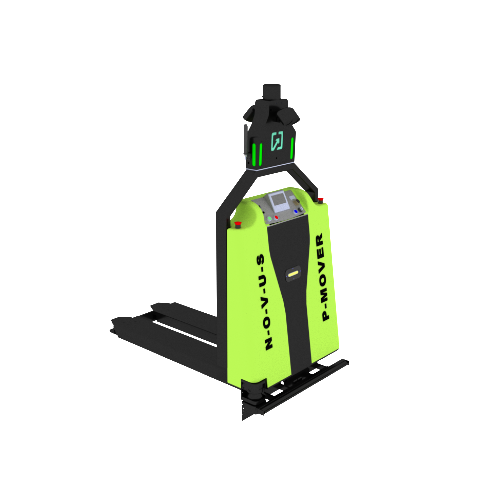Safety is running the show in the fast-revolving world of vehicle technology, thanks to Advanced Driver-Assistance Systems (ADAS) by Novus Hi-tech. Such innovative systems are revolutionary in changing driving to add safety and convenience, things that the modern driver demands. As we move into 2024, driver assistance system features are more of a necessity than optional, particularly for road users whose main concern is safety and how effective they are on the road. This blog highlights the top 10 must-have features of ADAS by Novus Hi-tech you should be on the lookout for when purchasing your next car to ensure you are fitted with the latest technologies in this regard so that you and your passengers are kept safe.
ADAS Software Key Features
Designed with proactive, in contrast to reactive, vehicle safety in mind, the features of ADAS are included to prevent accidents and therefore make for a safer driving experience. Here are 10 top ADAS features that you should strongly consider:
Collision Avoidance Systems
Collision Avoidance Systems likely make up the most crucial feature of ADAS because they are meant to detect all the possible obstacles that one might come into collisions with and take preventive actions to avoid them. The systems constantly monitor the zone around the vehicle with sensors and cameras to alert the driver or even provide braking if a potential collision is detected. Here in 2024, the functionality is eternal, with the precision of better and stupendous speed of reaction—something that makes it a must-have in any modern vehicle.
Lane Departure Warning
The lane departure warning system can save accidents by alerting the driver of the vehicle inadvertently deviating out of the lane. Such a feature on the ADAS is most beneficial on the highways, where incidences have a high occurrence frequency. Cameras used in the system enable the checking of lane markings and provide an audio, visual, or haptic alerting system to enable drivers to stay disciplined in their lanes. It helps avoid accidents due to inattention or drowsiness.
Adaptive Cruise Control
ACC builds over the conventional cruise control mechanism, enabling the user to set the vehicle speed automatically such that the specified gap between both the vehicle and the sheep ahead is maintained. This is most useful in situations of congested traffic, which demands frequent manual regulations in speed. 2024 ACC is more intelligent and responsive, ensuring a seamless drive and taking the safety standards to another level.
Parking Assistance
Parking Assistance systems have become a popular ADAS feature, especially in urban environments where parking spaces are tight and scarce. These systems enable the driver to navigate an environment using sensors and cameras that guide them into either a parallel or perpendicular parking space with great ease. The feature even can enable the car to park itself; thus, everyone will want it since several people fear parking at busy places.
Driver Drowsiness Detection
This is an ADAS capability that can save lives, as this feature observes the driving behavior of a driver for indications of fatigue. The power steering patterns and facial expressions, among others, are analyzed for the indicators to enable the system to work out a sleeping driver for an alert to avert danger. This is a very important capability for drivers undertaking journeys over long distances to prevent loss of lives due to fatigue.
Automatic Emergency Braking
AEB Automatic Emergency Braking is designed to intervene when the driver does not act when a potential impact is imminent. It is an ADAS feature on which the car can identify a hindrance between it, the pedestrian, or even other cars through which it is traveling. It then automatically applies the brake to prevent or reduce the collision. AEB has improved the systems of today in 2024 and now functions satisfactorily across a wide range of scenarios, including night-time driving or in challenging weather conditions.
Blind Spot Monitoring
Blind Spot Monitoring is one of the more critical features of ADAS, for it indicates the presence of a vehicle or object in the blind spot area—an area that is not very visible from mirrors. Safe lane change is never possible without this feature, especially on heavy-traffic highways. The newest system can be so advanced that active steering assistance can be given to avoid a collision if the driver initiates a lane change with an obstacle in the blind spot.
Cross-Traffic Alert
Cross-traffic alert systems make spaces or driveways safer for backing out, other than simply seeing through the rearview mirrors and cameras. This ADAS feature senses whether there is incoming traffic from the sides and issues a warning to the driver in the event of an impending collision. With the knowledge aspect of rearview mirrors and cameras, the visibility of an object is usually limited. The Cross-Traffic Alert is therefore a very useful addendum to a system, especially in busy or crowded parking lots.
Night Vision
One of the more advanced features of ADAS is Night Vision, detecting pedestrians, animals, and other obstacles through infrared sensors when the light is low. This feature improves driving safety very much at night because it enables a view over a longer distance beyond the current limit by a headlight. Night Vision technology is, in 2024, more accessible and reliable, hence beneficial to those who normally operate the vehicle after hours.
Traffic Sign Recognition
Traffic Sign Recognition is among those ADAS features that identify and display road signs in a vehicle’s dashboard to keep drivers informed about speed limits, no-entry signs, and other important information that relates to their driving. This feature could be of immense help in unfamiliar areas where a driver could easily miss important signs. The newer versions of this feature can now identify an even wider range of signs and also give up-to-the-moment updates so that drivers remain compliant with traffic laws.
Explore how Advanced Driver Assistance Systems (ADAS) revolutionize driving.
Download our Brochure for expert insights and trends!
Why Companies Should Have an ADAS System for Fleets Management
ADAS functions are useful not only for private drivers but are also relevant in the management of fleets. The role of an ADAS system in fleet management might make a difference; here are the reasons that make ADAS integration a must for your fleet management strategy:
GPS Tracking in Real Time
Real-time GPS tracking in ADAS helps the fleet manager track the location, route, and estimated time of arrival of vehicles. This enables managers to optimize routes without affecting productivity while making an effort to save fuel and optimize resource usage.
Monitoring the Driver Behavior: of drivers is essential in keeping both safety and productivity at par under a fleet management solution. The use of ADAS helps in supporting driving performance, and observing habits in braking, speeding, and rapid acceleration. This information can be used in implementing training programs that would reduce incidents and increase performance.
Telematics Solutions: Telematics play a critical role in today’s fleet management and give a general view of the performance and health of the vehicles. An ADAS system can be interfaced with telematics, which offers detailed performance reports of the engine to improve fuel efficiency, reduce maintenance needs, reduce downtime, and extend the vehicle lifecycle.
Fatigue and Distraction: Similar to the application in personal vehicles, ADAS systems in fleet vehicles also aid in driver monitoring for fatigue and distraction, helping the driver stay awake and attentive while on the road. This is of much help to long-haul delivery drivers who are quite prone to such tendencies and can cause accidents, hence lowering the chances of accidents.
Customizable Alerts and Reports: ADAS systems permit setting up alerts and developing reports on various parameters, which include the speed of the vehicle, location, and driver behavior. Such insights help in making data-driven decisions for increasing safety and efficiency in fleets.
Fuel Management: Fuel management is crucial to managing the operating cost of the fleet. The consumption of fuel can be optimized with the help of ADAS-type systems as they provide real-time information on driving habits and vehicle performance to allow fleet managers to implement strategies to reduce fuel consumption.
User-Friendly Interface: Fleet management requires software with a user-friendly interface. ADAS offers driver-friendly dashboards that are very intuitive, real-time integrated with very easy access, giving all the important information needed to carry out very streamlined and effective fleet management.
Driver Coaching: Enhance driver safety and performance with ADAS, reducing accidents and improving efficiency.
Conclusion
Equipping vehicles with more advanced ADAS features has never been more critical as we go into 2024 to enhance safety while on the road. From Collision Avoidance Systems and the Smith System to Traffic Sign Recognition, these aim to provide overall safety, convenience, and efficiency while driving. Whether you are a single driver who wants to get the safest in-vehicle technology features or a fleet operator improving operations, think of these ADAS features atop your list. Ready to upgrade? Contact us today to learn how Novus Hi-tech can help you stay ahead on the road!
























